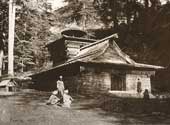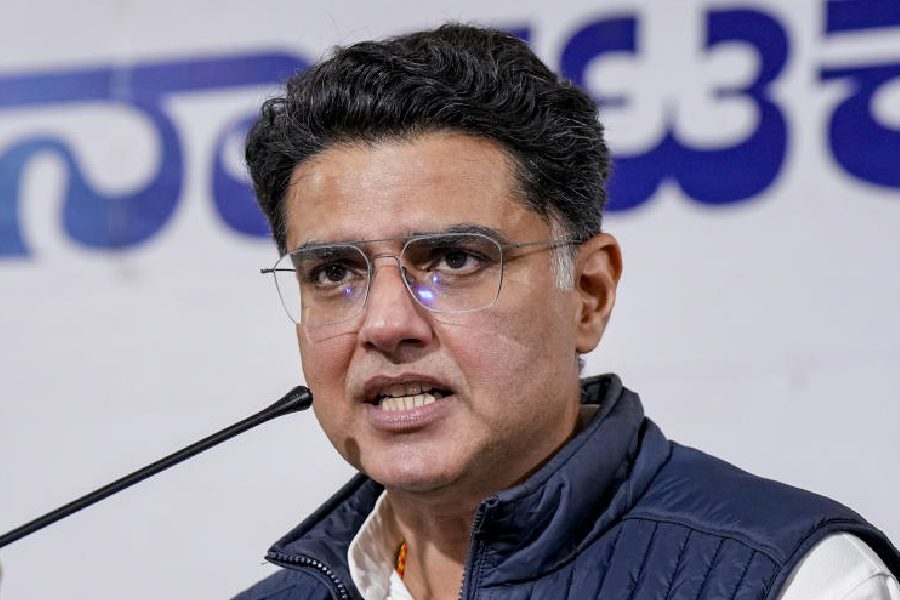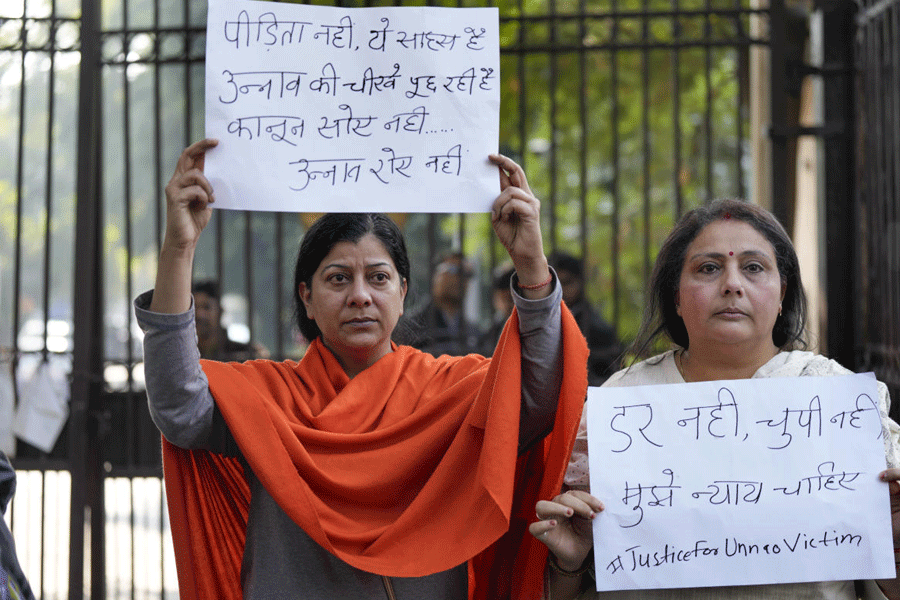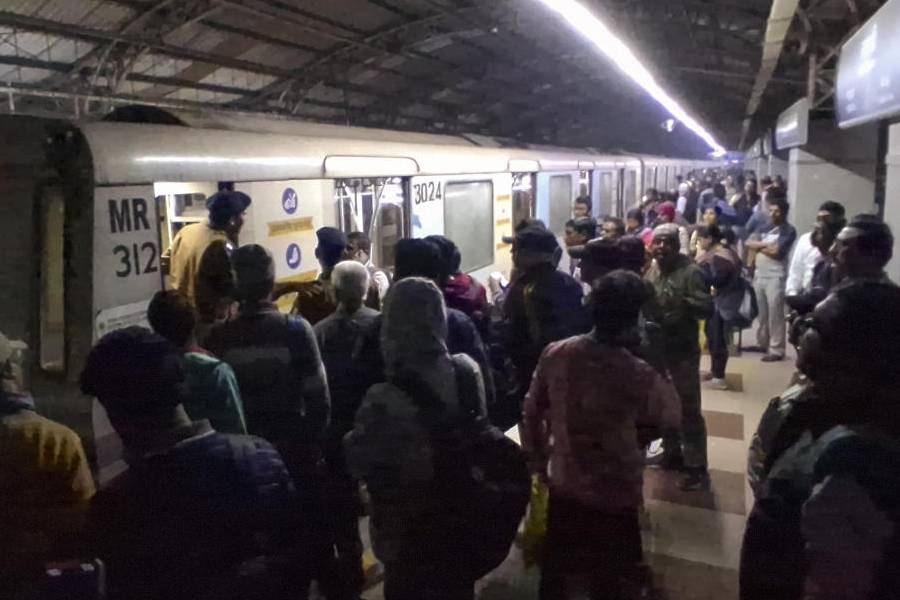|
|
| A temple near Simla |
In the summer of 1857, Debendranath Tagore found himself almost trapped in Simla. There were rumours of Gurkhas on the rampage...and Meerut suddenly seemed quite near. In Swarachita Jiban-Charit, which deals at length with his Himalayan sojourn, Debendranath is quite candid on why he left home so often: it was not only wanderlust but also an urge to escape the expectations of indigent and debt-ridden relatives. And, of course, his wife Sharada remained in Calcutta, to cope with a growing brood of children and family while he sought peace.
Although Simla was to become the summer capital of the Raj in 1864, there was, by the 1850s, a substantial administrative presence in the town, including the ubiquitous Bengali clerk, lawyer and teacher. A few quickly befriended the scion of the Tagore family, asking him to join them when they decided to flee from Simla. Declining their offer, Debendranath decided to move more into the interior. However, this was easier said than done as coolies were no longer available. Finally, a ferocious-looking coolie sardar provided him with the men, and Debendranath set off for the safety of Dagshahi, a cantonment also known for its sanatorium.
After hearing that things were calmer, he returned to Simla, only to decide on another trek, this time in the direction of the ‘native’ states of Rampur and Bhajji. He was at peace walking, riding and being carried in a jhampan through dense jungles, living in remote villages, occasionally in dak bungalows, otherwise in the open, eating coarse chapattis made of makke ki atta (corn flour) mixed with atta, drinking milk and tea. And soon he sighted the mighty Satadru (Sutlej) far below, “glistening like a silver leaf in the sunlight”. For one of the founders of the Brahmo Samaj, the solitude of the mountains gave time and space for meditation. Debendranath was quite the exception, as there were not many spiritual explorers like him who wrote about their experiences till much later. Some years into the 20th century, his son Rabindranath was to go to Ramgarh in the Kumaon where he wrote parts of Gitanjali. Mahadevi Verma too lived in this small hamlet for several summers.
But this was several decades later, when hill stations had become a part of the everyday vocabulary of Indians as well. When Debendranath decided to spend time in Simla, the hill station as a place of leisure and respite — and of course some surveillance — was the preserve of the ruling class. Most major ones were founded in the 1840s and 1850s. Relentless Indian summers, mosquito bites that became ‘huge blisters’ and the fear of cholera, typhoid and the likes provided ample grist for nightmares and hastened the search for escape routes. While men would go up for short spells, families stayed on for months. Flora Anne Steel, that astute commentator on life in India for the memsahib, felt that despite the separation dreaded by wives (one never knew which lissome wench in the servants’ quarters the sahib would train his eye on), a summer in the hills would ultimately pay off.
Often, missionary settlements were responsible for interest in a particular area. In 1850, on a visit to Almora in the Kumaon, Reverend John Henry Budden of the Mirzapur Mission of the London Missionary Society was asked by Captain (later Sir Henry) Ramsay to start a mission in the Kumaon Hills. The society agreed and two buildings adjoining the bazaar — formerly a mess-room and a billiard room for the regimental officers — were taken over for mission work, one of the buildings being used as the mission chapel. Sunday services were offered in both Hindustani and English — clearly, the antecedents of the building were not delved into too closely, and Almora soon grew into much more than a missionary base.
If it became a centre of retreat for survey, telegraph and railway staff, Mussoorie attracted subalterns out for a good time, and of course, Simla was jealously guarded by top military and civilian personnel. It was the world of the Kiplingesque Mrs Hauksbee or even Phil Garron who ‘went native’ by marrying Dunmaya. It provided a brief spring for rakish officers, vampish women, subterfuge and fantasy. While some remained isolated barracks — such as Chakrata and Jalapahar — others clearly became gay social and educational centres. Children were sent to boarding school often run by missionaries and the Catholic Church as the hill station was seen as an attractive alternative for those who were not sent home. The racial divide was strictly maintained and the babalog were warned against befriending their Indian peers.
As malls, bandstands and theatres proliferated, so did the need to record the India that was not only heat and dust for those back home. Before the arrival of the camera, in 1788, the Daniell uncle-and-nephew team had visited Garhwal. They were the first European artists to record the Himalaya, although a volume exclusively on the region had to wait till 1836 when Lt. George White’s richly illustrated notes on his tours, Simla and Mussooree, Himalayan Mountains, were published. And of course, there were Emily Eden, Alicia Eliza Scott and a host of others who painted mainly for pleasure. With the appearance of photography, availability and modes of representation changed radically.
The photographer, Samuel Bourne, not only set up a studio in Simla in 1863, but also found it a convenient base for his treks. His portfolio that included many generic hill-station shots — the snow-clad Christ Church in Simla (1863), the Church of St John-in-the Wilderness in Naini Tal (1866), of Bhim Tal (1866) on calm mornings, of clubs, gubernatorial residences and even monuments and temples (picture) served colonial memories well and put the Indian hill station firmly on the map. English-style cottages with familiar names were built and acquired, as the re-creation of nostalgic ambiences was a significant mnemonic ploy. “Our spirit soars as we read of the ‘Eagle’s Nest’, ‘The Crags’ or ‘The Highlands’ whilst ‘Sunny Bank’ and ‘The Dovecote’ opens up a vista of quiet restfulness,” wrote Flora Anne Steel.
Debendranath obviously wrote about his journeys after he returned to Calcutta. He carried neither pen nor paper with him — nor, for that matter, did Samuel Bourne, who nevertheless wrote several despatches for The British Journal of Photography between 1863-1870. These are fascinating accounts of an intrepid, though somewhat rapacious, adventurer engaged in bringing home several portfolios of India’s landscape. He wrote, “Before I commenced photography I did not see half the beauties of nature that I see now, and the glory and power of a precious landscape has often passed before me and left but a feeble impression on my untutored mind; but it will never be so again.”
When, at the end of ten weeks, he headed back for Simla, “scattered over with pleasant bungalows, the abodes of comfort and civilisation”, Bourne was grateful that he had 147 negatives “of scenery [that had] never been photographed before”, and that none of his precious equipment nor his glass plates had been damaged. Over the decades, the Himalaya have been photographed, filmed, digitalized and hill stations have been Indianized, properties have changed hands, chawls and seedy hotels replacing elegant theatres and old establishments. Yet, ‘going to the hills’ — the experience immortalized visually by Bourne and others — flourishes; the entrepreneurial spirit of several tour operators and enterprising vendors of adventure have ensured that for generations to come.












